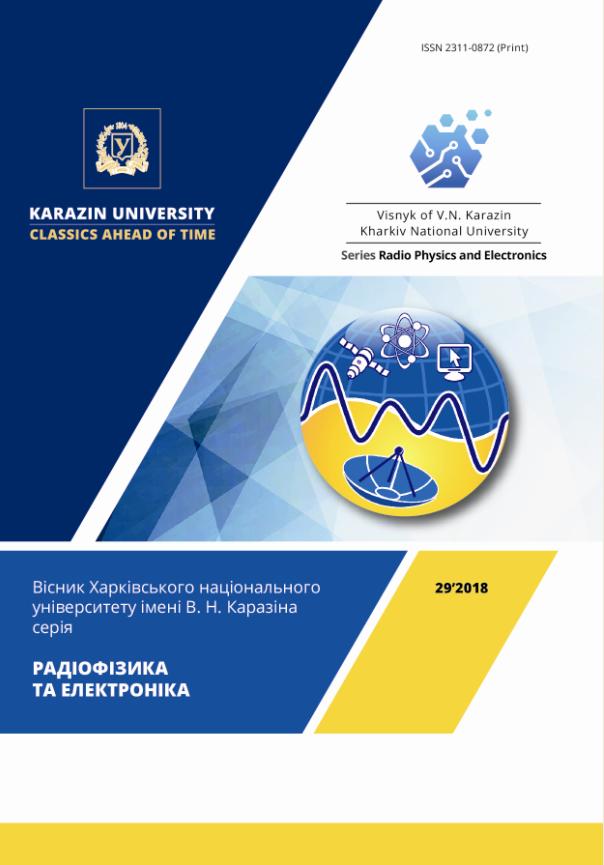About modeling the waves scattering on the complex shape objects
Abstract
Background: Reducing the detection probability by radar stations for military or civil complex shape objects is very important problem of modern radar theory. The solution to this problem is impossible without numerous estimates of the effective scattering surface (RCS) of the investigated object.
Objectives: The purpose of the work was to analyze and improve the efficiency of methods for modeling electromagnetic scattering on objects of complex shape. The process of constructing a facet model of an complex shape object for modeling electromagnetic scattering and an algorithm to simplify the geometric model of an object to reduce the time required for modeling is considered.
Materials and methods: As the main method for calculating the RCS, we chose the method of rays that fall and reflect (in the English language literature “Shooting and Bouncing Rays” SBR). Wherein the modeling electromagnetic scattering on an complex shape object is based on the methods of physical and geometric optics. Object is represented in the form of a geometric model which takes into account the shape of the object and its electrodynamic properties (reflection coefficient, dielectric and magnetic permeability of the surface, conductivity, etc.).
Results: The general steps of the SBR method are discussed, and the efficient of using the surface mesh method to launch the rays is shown. Effective approaches to simplify the calculation for complex shape objects are proposed, in particular, the use of Raytressing and k-d tree is considered. The using of large facets for modeling surface flat sections of complex shape object is proposed. To assess the effect of the facet size on the accuracy of RCS calculations, we simulated electromagnetic scattering for a triangular plate, the surface of which is represented using different numbers of facets. A comparison with the well-known expressions for a triangular plate RCS is made.
Conclusions: The accelerating possibilities of the process of electromagnetic wave diffraction calculation on complex shape objects are offered. The efficiency of the created algorithms is tested numerically.
Downloads
References
Youssef NN. Radar cross section of complex targets. Proceedings of the IEEE. 1989 May;77(5):722-734.
Khrychov V, Legenkiy M. Statistical RCS Processing. Proceedings of the international young scientist forum on applied physics; 2016 Oct 10-14; Kharkiv. Kharkiv: Institute of Electrical and Electronics Engineers (IEEE); 2017. p. 1-4.
Legenkiy MN, Maslovskiy AA, Khrychev VS. Processing RCS Distribution for Complex Shape Objects. Telecommunications and Radio Engineering. 2016;75(20):1825-36.
Legenkiy M, Maslovskiy A. Specific RCS for On-Ground Radiolocation Target. In: Proceedings of the IEEE Microwave, Radar and Remote Sensing Symposium; 2017 Aug 29-31, Kyiv; p. 211-214.
Legenkiy M, Butrym A, Antyufeyeva M. Evaluation of On-Ground Object Radar Detectability Reduction. In: Proceedings of the conference Mathematical Methods in Electromagnetic Theory; 2014 Aug 26-28, Dnipropetrovsk;. p. 254-257.
Stretton JA. Eleciromagneiic Theory. In: Stretton JA, editor. McGraw Mill, New York; 1941.541.
Tami D, Rego CG, Guevara D, et al. Analysis of Heuristic Uniform Theory of Diffraction Coefficients for Electromagnetic Scattering Prediction. International Journal of Antennas and Propagation. 2018; 2018:11. Available from: http://downloads.hindawi.com/journals/ijap/2018/3029152.pdf doi: 10.1155/2018/3029152
Ufimtsev PYa. Teoriya difraktsionnyih kraevyih voln v elektrodinamike [Theory of diffraction boundary waves in electrodynamics]. М.: Binomial. Knowledge lab. 2013. 372 p. [In Russian].
Khrychov VS, Legenkiy MN. Facetna model objekta skladnoyi formy dlya rozrakhunku electromagnitnogo rozsiyanya. [Facet object model of complex shape for electromagnetic scattering calculation]. Bulletin of the Karazin Kharkiv National University , radiophysics and electronics series. 2018;28:44-52. [In Ukrainian].
Sukharevsky OI, Vasilets VA, Kukobko SV, et al. Rasseyanie elektromagnitnyih voln vozdushnyimi i nazemnyimi radioloka-tsionnyimi ob'ektami [Scattering of electromagnetic waves by air and ground-based radar objects]. In Sukharevsky OI, editor. Kharkiv HUPS. 2009. 468 p. [In Russian].
Sukharevsky OI, Vasilets VA. Mathematical Modeling of Radar Range Profiles of Aerial Objects. Radioelectronics and Communications Systems. 2013;56(11):503-12.
Meng HT. Acceleration of asymptotic computational electromagnetics physical optics-shooting and bouncing ray (po-sbr) method using cuda. IEEE Transactions on Antennas and Propagation, Sep. 2014;62(9):4706–4715.
Kobak VO. Radyolokatsyonnye otrazhately [Radar reflectors]. M. Soviet radio; 1975. 248 p. [In Russian].




